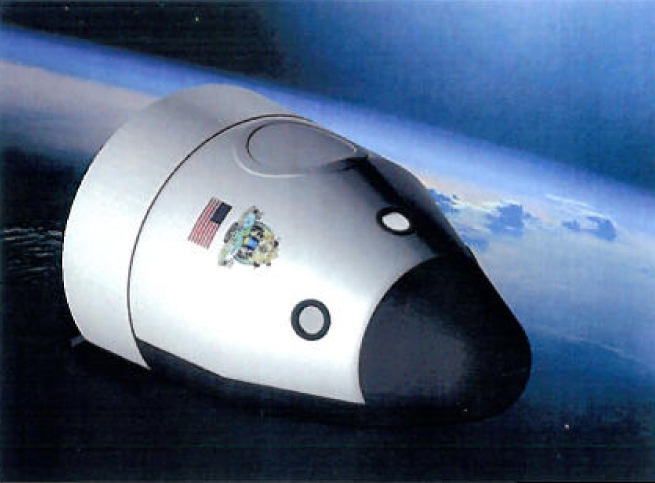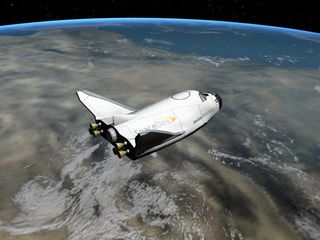NASA's Plan for Private Space Taxis Takes Step Forward

NASA's plan to use commercial spaceships to carry astronauts to orbit after the space shuttles retire is coming along nicely, the agency announced today.
The four private companies awarded funding under NASA's most recent round of Commercial Crew Development 2 (CCDev2) contracts have met all of their initial milestones so far, agency representatives said.
"Each one of the partners hit the ground running," Phil McAlister, NASA's acting director of commercial spaceflight development, told SPACE.com. "We're only 60 days into CCDev2 and we've already hit and met those initial milestones successfully, so we're really pleased about that."
NASA is slated to mothball its three-orbiter space shuttle fleet this year, after 30 years of flying the shuttles to and from low-Earth orbit. While NASA tackles tougher challenges like getting humans to an asteroid and Mars, it hopes the commercial industry can step up soon to fill the gap in U.S. spaceflight abilities.
NASA is also encouraging commercial companies to build unmanned spacecraft to ferry supplies to and from the International Space Station, which is another need that must be filled when the space shuttles are gone.
Four frontrunners
The four companies at the forefront of the push for commercial crew spacecraft are Blue Origin of Kent, Wash., which won $22 million from NASA; the Sierra Nevada Corporation of Louisville, Colo., which was awarded $80 million; Space Exploration Technologies (SpaceX) of Hawthorne, Calif., which got $75 million; and Boeing of Houston, which received $92.3 million.
Get the Space.com Newsletter
Breaking space news, the latest updates on rocket launches, skywatching events and more!
NASA is hoping these private spacecraft will be ready sometime in the mid-2010s.
"There are significant challenges associated with this program — technical, financial and even cultural challenges," McAlister said. "There is no guarantee of success, but we believe we have a very good plan to get there. Assuming we get funded sufficiently, I think it's very reasonable to assume that by the middle part of this decade we’ll have services to the ISS."
Initial milestones
On May 19, Boeing completed itsdelta Systems Definition Review, where engineers presented updates and improvements to the design plans for the company's CST-100 spacecraft, including better protection from space junk and other additions.
"We brought in outside experts who reviewed the vehicle design from an overall integrated system perspective to ensure that we are designing and building a safe and affordable system," Keith Reiley, deputy program manager of Commercial Crew Programs for Boeing, said in a statement.
SpaceX, which is the only company of the four to have already launched a spacecraft on a test flight to orbit, is working on building a launch abort system for its vehicle, which is a requirement for manned flight.
In December 2010, the company lofted its Dragon capsule atop its Falcon 9 rocket to space. After making two orbits of Earth, the Dragon safely splashed down in the Pacific Ocean, marking the first time a private company had sent a spacecraft into orbit and retrieved it back on Earth. [Infographic: Inside Look at SpaceX's Dragon Capsule]
In May, SpaceX held a CCDev 2 Kickoff Meeting, where engineers reviewed certification requirements from NASA and presented on the design status of all systems to NASA officials.
Space plane
Sierra Nevada is building a reusable winged space plane called Dream Chaser that resembles the space shuttles more than a capsule design.

On June 1, the company conducted a project kickoff meeting and a System Requirements Review, at which Sierra Nevada provided NASA with a plan for meeting the human certification requirements, a risk mitigation plan and other details.
Blue Origin also recently conducted a series of kickoff meetings centered around its efforts to further the design of its spacecraft, develop an astronaut escape system and accelerate engine development for its rocket booster.
The company, known for being secretive about its spacecraft plans, intends to launch a reusable crewed space vehicle first atop an Atlas 5 rocket, and then aboard its own Reusable Booster System, which will use a new, low-cost liquid oxygen/liquid hydrogen engine.
Upcoming tests
Most of the commercial companies' initial milestones were meetings and tests. The CCDev program is still in its early phases, when spaceflight plans are being developed; final designs have not yet been chosen or constructed.
"We are in the design phase, so it is expected and natural that we would have a lot of reviews to see where they are and understand their progress," McAlister said. "In the design phase, there is a lot of work that's done that’s not a big test. We are going to see some of those, but not 'til a little bit later into the program when these designs have had a little more time to mature."
McAlister said we can look forward to some motor firings, launch-abort system and pad escape tests, and other dynamic activities soon.
NASA plans to announce a call for the third round of proposals under its commercial crew development program before the end of the year, and to make awards sometime in summer 2012.
This time, instead of single elements, such as spacecraft or launch vehicles, as were called for under CCDev2, NASA will be soliciting full end-to-end space systems that include a spacecraft as well as a rocket, to execute the whole mission.
Even companies that didn't win contracts under this last round of awards still have a fighting chance, McAlister said.
"The next round will be a full and open competition, open to any U.S. company that wants to compete," he said.
You can follow SPACE.com senior writer Clara Moskowitz on Twitter @ClaraMoskowitz. Follow SPACE.com for the latest in space science and exploration news on Twitter @Spacedotcom and on Facebook.
Join our Space Forums to keep talking space on the latest missions, night sky and more! And if you have a news tip, correction or comment, let us know at: community@space.com.

Clara Moskowitz is a science and space writer who joined the Space.com team in 2008 and served as Assistant Managing Editor from 2011 to 2013. Clara has a bachelor's degree in astronomy and physics from Wesleyan University, and a graduate certificate in science writing from the University of California, Santa Cruz. She covers everything from astronomy to human spaceflight and once aced a NASTAR suborbital spaceflight training program for space missions. Clara is currently Associate Editor of Scientific American. To see her latest project is, follow Clara on Twitter.